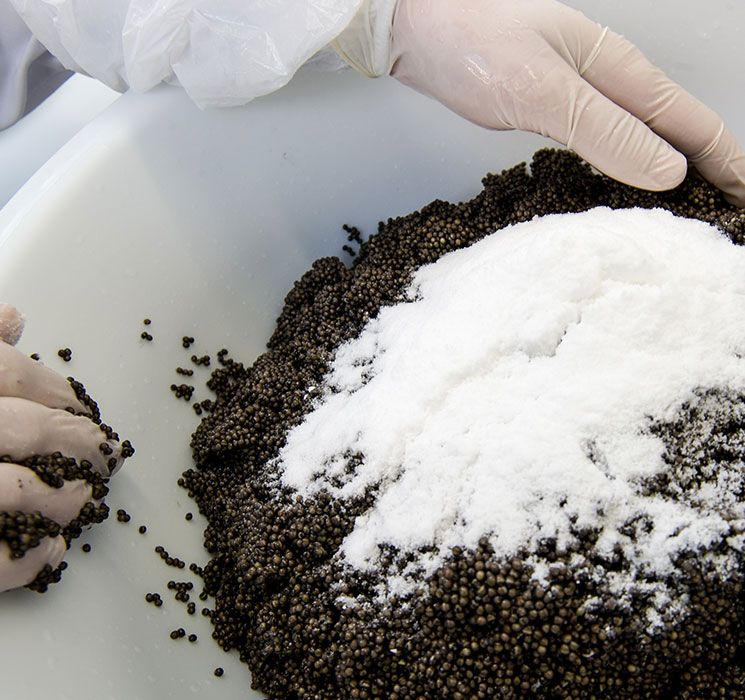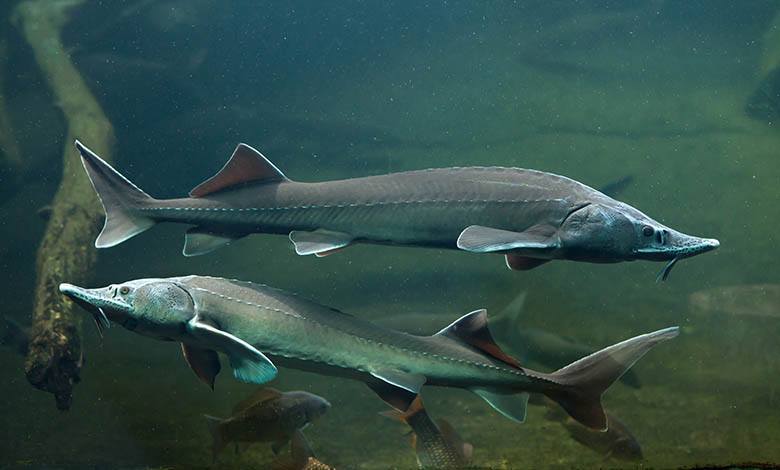You might see the caviar label on many jars and tins out in the supermarkets, but how can you be sure that what you’re buying and eating is, in fact, caviar? Is caviar just fish eggs? The answer is yes...and no. Caviar is another name for fish eggs, but caviar is more than just fish eggs. Not all fish eggs were created equal, and not all fish eggs are caviar.
What is caviar, then? Our caviar definition is it’s the salted eggs from 26 species of sturgeon, including the famous Beluga (sturgeon, not whale), Sevruga, and Osetra sturgeon. That’s it! So, what are other types of fish eggs called? Any fish eggs that are not from sturgeon are called "roe".
Caviar vs. Roe
Although it’s not a competition, roe refers to fish eggs in general, while as our definition noted, caviar is sturgeon fish eggs in particular.
Thus, all caviar is roe, but not all roe is caviar. But informally, the word is used when talking about edible fish eggs in general. For example, popular types of roe in gastronomy include salmon and trout roe, herring roe, lumpfish, and flying fish roe like tobiko caviar and Masago and capelin caviar that are used to garnish sushi. There are many fish that deliver delicious eggs, and they’re generally referred to as caviar.
You can define anything in theory, but in reality, you’ll find any fish eggs in any menu defined as caviar and there’s really nothing wrong with that at all. Salmon roe is delicious and completely worthy of the explicit luxury implied in the name caviar. Food snobs aside, a scoop of black or red lumpfish roe over a sushi roll really adds a fresh, salty pop that would be sorely missed if absent. It’s also very inexpensive and widely available, which is an added bonus. Don’t be afraid of the word roe, and give all the fresh, delicious types a chance!
Caviar Ingredients

Caviar is a very simply prepared delicacy. It’s made of sturgeon fish eggs that are mixed with a small amount of salt. This is because this delicacy is simply delicious by itself, and is only minimally processed to maintain the fresh, buttery flavor.
The most premium varieties are only made with fish eggs and salt, and only sturgeon eggs and salt should be listed on the ingredients on your tins or jars. That’s it. Those are the only ingredients that go the good stuff. If there are any other ingredients listed on the tin or jar, it might be pasteurized or not caviar at all.
This very fine salting enhances the flavor but also extends the shelf life, but the salt content should be relatively minimal, just enough to preserve the eggs, using the Malossol curing method. Malossol caviars have less than 5% salt, but most high-quality varieties will contain less than 3%. Anything that’s over 8% salt is considered semi-preserved, and over 10% we’re talking about a different type of food product altogether, called payusnaya, which is more of a paste or jam in consistency. Payusnaya caviar is considered a delicacy as well, and beloved by connoisseurs.
Where Does Caviar Come From:

Wild Caviar
Traditionally this delicacy has come from wild Caspian Sea and Black Sea sturgeon, with the Caspian Sea being the most famous source. This huge salt-water lake washes the shores of Russia, Iran, Azerbaijan, Kazakhstan, and Turkmenistan. The Black Sea lies between Bulgaria, Georgia, Romania, Russia, Turkey, and Ukraine. Russia and Iran are by far the most well-known producers of caviar, with Russian Beluga hailed as the most prized of all.
Farmed Caviar
Due to the depletion of wild sturgeon populations, most caviar today is farmed caviar, raised, and harvested in aquaculture farms around the world. These farms use true sturgeon stock, which is raised for years in controlled tanks or pools, and then harvested for eggs. Different types of prized Osetra and Sevruga are the most popular choices for aquaculture. The result is a product that is viable and sustainable, with a very multicultural flair. Top-notch farms around the world can be found in Italy, Israel, France, the US, and even Uruguay. If the sturgeon stocks are authentic and the water pristine, you can find incredibly high-quality farmed caviar.